Day 2 :
Keynote Forum
Robert H. Schiestl
University of California, USA Professor of Pathology, Environmental Health and Radiation Oncology UCLA Schools of Medicine and Public Health, USA
Keynote: Intestinal and lung inflammation cause systemic genotoxicity throughout the body
Time : 11:15-11:45

Biography:
Schiestl received his Ph.D. in Biology and Genetics from the University of Vienna, Austria, in 1983. He is currently a Professor of Pathology, Environmental Health and Radiation Oncology. Previously, he served as Assistant and Associate Professor in the Department of Cancer Cell Biology at the Harvard School of Public Health. He is Director of the UCLA Center for Environmental Genomics and a current member of the UCLA Cancer Center, UCLA Center of Occupational and Environmental Health, UCLA Interdepartmental Program in Molecular Toxicology (Faculty Advisory Committee), and UCLA ACCESS Graduate Program steering committee. He is also a member of the Planning Committee for the Environmental Mutagen Society meeting as well as Chair and Speak at the Symposium on \\\\\\\\\\\\\\\\\\\\\\\\\\\\\\\"Genetic Instability\\\\\\\\\\\\\\\\\\\\\\\\\\\\\\\" which will be held on March 11-15, 2003 at Miami Beach, Florida.
Abstract:
Chronic ulcerative colitis (UC) leads to increased risk of colorectal cancer. Dextran sulfate sodium (DSS) administration to mice is a widely used model for UC and UC-associated neoplasia, however mechanisms involved in the early inflammation to dysplasia sequence still remain elusive. The purpose of this study was to characterize and quantify systemic effects of acute and chronic DSS-induced intestinal inflammation in terms of genotoxicity. Several genotoxic endpoints in peripheral leukocytes including formation of DNA single and double strand breaks and oxidative DNA damage, as well as presence of micronuclei in normochromatic erythrocytes were assessed in the peripheral blood for three consecutive cycles of DSS treatment (1 cycle = 7 days DSS treated water + 14 days normal water). Genotoxicity to peripheral leukocytes was evident in the form of single and double strand breaks accompanied by oxidative base damage in both the acute and chronic phases of DSS-induced inflammation. Micronucleus formation was also significantly induced in erythroblasts. Levels of DNA damage generally decreased during remission and increased during treatment, correlating with clinical symptoms. Systemic inflammation, demonstrated by modulation of expression of Th1 and Th2 cytokines in the peripheral blood, was also evident, accompanying the observed DNA damage. Lung inflammation also causes systemic genotoxicity. We propose that systemic genotoxicity results as a consequence of inflammation, since DSS is not directly genotoxic and is not absorbed. A further propagation of the inflammatory response accompanied by DNA damage may therefore contribute early on to genetic instability, necessary for progression to UC-associated dysplasia and cancers.
Keynote Forum
Madeleine Duvic
Deputy Department Chair
The University of Texas MD Anderson Cancer Center
USA
Keynote: Targeting the ElusiveSézary Cell
Time : 09:00-09:30

Biography:
Madeleine Duvic, M.D., Professor of Internal Medicine and , is Deputy Chairman of the Department of Dermatology at The University of Texas, MD Anderson Cancer Center in Houston, Texas. She received her medical degree from Duke University Medical School and completed an internship and residencies in internal medicine and dermatology, served as chief resident, and completed a fellowship in molecular biology and geriatrics. She is a former board member of the American Academy of Dermatology and recent vice president of the Society for Investigative Dermatology. She was elected to the ADA and is a founder and board member of the United States Consortium for Cutaneous Lymphomas. She serves on Medical and Scientific Boards of the National Alopecia Areata Foundation and Cutaneous Lymphoma Foundation and is the Principal Investigator of the Alopecia Areata Registry. Dr. Duvic has been named consistently as one of America’s Top Doctors by Castle Connolly and Best Doctors in America for 12 consecutive years. She has authored over 420 peer-reviewed journal articles, two books, and has mentored numerous medical students, residents, fellows, and PhD students. She has been Principal Investigator of numerous clinical trials and translational research studies of T-cell mediated diseases and malignancies, including T-cell lymphomas, melanoma, and skin cancer. Her work is focused on developing and improving therapy for cutaneous T-cell lymphoma.
Abstract:
The Sézary Cell is a puzzling malignant vs activated white blood cell first discovered by dermatologist Albert Sézary. He described the cell with a cerebriform nucleus in patients with erythroderma. Later it was found to be a T-cell by Lutz and others at the NIH and was suspiciously similar to HTLV-1 adult T-cell leukemia although no virus has yet been implicated. Recently, staging has been updated to include blood involvement for patients with SS and the mycosis fungoides form of cutaneous T cell lymphomas. The clinical features of SS are distinct from other forms of CTCL and include erythema > 80%, keratoderma, ectropion, reactive adenopathy, and severe pruritus. The role of staphylococcus and drug induced disease suggests that some patients have persistent antigene stimulation as an initiating factor. Several other clinical Cutaneous T cell lymphomas (CTCL) have been described using clinical features, and histopathologic markers: the CD30 lymphoproliferative disorders, gamma delta lymphomas, subcutaneous panniculitic T cell lymphoma. rnrnrnrn
The molecular basis for MF/SS have been the subject of intense basic research efforts. Genetic studies of the SS cell uncovered genetic instablility with multiple deletions and gains seen by karyotyping and by array CGH. Whole genome sequencing of SS and MF DNA has revealed somatic mutations that may help us to understand what drives the proliferation of the SS cell. Understanding the pathogenesis of the SS cell has translated into new targeted therapies for both SS and MF. These include fusion proteins (denileukindiftitoxin and CD3-diptheria toxin), monoclonal antibodies targeted to CD4, CCR4, CD52, KIRD3L, and CD30. In addition, small molecules such as histone-deacetylase inhibitors have shown sensitivity in SS. Another break through has been in the area of non-ablative allogeneic stem cell transplant that offers cure to a subset of patients. In summary, the future looks bright to finally silence the elusive Sézary cell in the not too distant future.
Keynote Forum
Ahmed G Hegazi
National Research Center, Egypt
Keynote: Bee products as immuno-potentiation
Time : 09:30-10:00

Biography:
Ahmad G Hegazi worked as a Professor of Microbiology & Immunology, National Research Center National Research Center, Dept. Parasitology, 1997-2000, Chair of Faculty of Medicine, Zagazig University, 1981-1997, part-time Professor and Supervisor of Immunology Section, National Research Center, 1990- up till now. He is also Prof. of Microbiology & Immunology, African Federation of Apiculture Associations (AFAA), 2001- up till now, Standing Commission on Apitherapy (APIMONDIA), 1999 - up till now, Member of Standing Scientific Committee, National Research Center, 1998 –up till now. He was awarded the Excellent Medal of the First Class, 1995, received the Senior Scientist Prize of National Research Center, 1996, and won The Second Best Research Paper award from International Congress of Propolis, Argentina, 2000. He has published in Egyptian Journal of Immunology, 1995, was in the Editorial Board of The Egyptian Association of Immunologists, 1992 –1997, Secretary General, Referee in 37 international journals patents: 4 Patents Educational Activities. He has published 193 articles in national and international scientific journals, 6 books in English and 7 books in Arabic.
Abstract:
The uses of honeybee products for therapeutic purposes referred to Apitherapy. The apitherapy term comes from the Latin apis, which means \\\"bee.\\\", or bee therapy. Bee products included venom, bee pollen, raw honey, royal jelly, and propolis. These products from bees that are generally considered to have medicinal effects. A great interest in last decade of biologist, medical doctors and scientists are directed due to their biological and phytochemical activities of apitherapy.rnBee products contain physiologically active substances from floral origin of bee and plants. Bee products act upon both innate and adaptive immune response. At different levels, in the human innate response, these compounds decrease proinflammatory cytokine synthesis (IL-2, IL-12 and IL-4), inactivate both the classical and alternative complement pathway, and decrease superoxide anion production in neutrophils. Where in adaptive immune response, propolis and honey induce the increase of antibody production by plasma cells, enhance the secretion of TGF-β after the activation of T regulatory cells, so the aim of this review was to through more light on the role of bee products immune potentiation. rn
- Track-9: Cytokines and Current Research
Track-10: Vaccines and Immunotherapy
Track 11: Inflammation and Therapies
Track-15: Immunodeficiency
Track-17: Immunopathology
Track-18: Nutritional Immunology: A Multi-Dimensional Approach
Location: Windsor - I

Chair
Charles J Malemud
Case Western Reserve University School of Medicine, USA

Co-Chair
Yongqun Oliver He
University of Michigan Medical School, USA
Session Introduction
De-chu Christopher Tang
VaxDome LLC, USA
Title: Activation of protective innate-adaptive immunity duo for conferring rapid-sustained-broad protection of vaccines against infectious agents
Time : 10:00-10:20

Biography:
De-chu Christopher Tang founded VaxDome LLC in 2014 and Vaxin Inc. in 1997 in Birmingham, Alabama. He was an Assistant/Associate Professor at University of Alabama at Birmingham (1994-2004). He was one of the pioneers during the development of DNA vaccines, noninvasive skin-patch vaccines, adenovirus-vectored nasal vaccines, adenovirus-vectored poultry vaccines, as well as the protective innate-adaptive immunity duo platform technology. He was selected as a Distinguished Overseas Scientist by the South Korea KOFST Brain Pool Program in 2012; and was appointed as a Scientist at International Vaccine Institute in 2013.
Abstract:
We report that intranasal administration of an E1/E3-defective (ï„E1E3) adenovirus serotype 5 (Ad5)-vectored influenza vaccine could induce seroconversion in human volunteers without appreciable adverse effects, even in subjects with pre-existing Ad5 immunity. Mice and ferrets were well protected against challenge by a lethal dose of an H5N1 avian influenza virus following intranasal instillation of an Ad5 vector encoding hemagglutinin (HA) in a single-dose regimen. Moreover, the ï„E1E3 Ad5 particle itself without transgene could confer rapid-sustained-broad protection against influenza by inducing an anti-influenza state in a drug-like manner, conceivably by activating a specific arm of innate immunity. An Ad5 vector encoding HA thus consolidates drug and vaccine into a single package, which allows the Ad5 backbone to induce protective innate immunity capable of conferring nearly-immediate and prolonged (e.g., 1- 47 days) protection as the first wave against influenza; followed by HA-mediated adaptive immunity as the second wave before the innate immunity-associated anti-influenza state declines away. Overall, the work conceivably would foster the development of a novel noninvasive drug-vaccine duo platform technology capable of conferring rapid-sustained-broad protection against pathogens with neither the potential to induce drug resistance nor that to trigger harmful systemic inflammation.

Biography:
Xingmin Sun is an Assistant Professor in research focusing on Clostridium difficile infection at Tufts University, USA. He received his PhD (magna cum laude) in Natural Sciences from University of Kiel, Germany, and did his Post-doctoral training in Molecular Microbiology, Cell Biology & Biochemistry at Brown University, USA. He received Young Scientist Award from Federation of European Microbiological Societies in 2002, and Infectious Diseases Fellows Grant from American Society for Microbiology and the Infectious Diseases Society of America in 2008. His research is supported by NIH and private sectors. He is investigating C. difficile toxin-mediated signal transduction, leading to the production of proinflammatory mediators. He is also developing preventive and therapeutic approaches targeting C. diffcile toxins and proinflammatory mediators in Clostridium difficile infection.
Abstract:
Clostridium difficile is the major cause of hospital-acquired infectious diarrhea and colitis in developed countries. The pathogenicity of C. difficile is mainly mediated by the release of two potent large exotoxins, toxin A (TcdA) and toxin B (TcdB), both of which are pathogenic and require neutralization to prevent disease occurrence. We have constructed a novel recombinant fusion protein, designated mTcd138, containing the receptor binding domain of TcdA and the glucosyltransferase and cysteine proteinase domains of TcdB and expressed it in Bacillus megaterium. To ensure mTcd138 is atoxic, two point mutations were made in the glucosyltransferase domain of TcdB, which essentially eliminates the toxicity. Parenteral immunizations of mice with mTcd138 induced highly protective antibodies to both toxins and provided full protection against parenteral toxin challenges with lethal doses of toxins and infection with a hyper-virulent C. difficile strain UK6. Our studies demonstrate the potential of mTcd138 as a vaccine candidate against CDI in humans.
IIldikó Molnár
Immunoendocrinology and Osteoporosis Centre, Hungary
Title: The role of IL-17A in postmenopausal inflammatory events, such as in osteoporosis
Time : 10:55-11:15
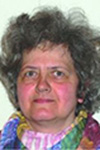
Biography:
Ildikó Molnár MD has completed her PhD at the age of 39 years at the candidate of science course (PhD) of Hungarian Academy of Science. Work and research connected her to Kenézy County and Teaching Hospital from 1977 to 2008. Now she is the chief of EndoMed, Immunoendocrinology, Private Outpatient Clinic from 2008. She is an expert in ELISA, Western and ECL blottings, colorimetric iodine measurement, as well as in allergy testing and bone density measurement with Hologic DEXA. She has published more than 48 papers in reputed journals, 16 chapters and 2 books.
Abstract:
Postmenopausal women demonstrate increased susceptibility to chronic inflammatory events. Estrogen deficiency increases the production of inflammatory cytokines such as IL-1, IL-6 and tumor necrosis factor-α (TNFα), as well as activates the IL-17 receptor signaling pathway. IL-17 (also known as IL-17A) is a new candidate in the chronic inflammatory diseases, produced by T helper 17 (Th17) lymphocytes and effects on neutrophil recruitment and granulopoesis. We studied the relationship between IL-17A serum levels and estrogen deficiency, as well as IL-17A-mediated osteoporosis in postmeno¬pausal women. Seventy-two post-menopausal and 22 pre-menopausal women formed the patient groups. Estradiol, osteoprotegerin (OPG), soluble receptor activator of NF-κB (sRANK) ligand, IL-17A were measured with enzyme-linked immunoassy (ELISA) and dual-energy X-ray absorptiometry (DXA) was carried out. High prevalence of elevated IL-17A serum levels were demonstrated in postmeno¬pausal women compared to premenopausal ones (3.5±0.56 vs 2.88±0.08 ng/ml, P<0.0001). IL-17A levels showed age-related dependency and a remarkable association with the postmenopausal period (P<0.05). Osteoporotic women demonstrated higher IL-17A, OPG and sRANK ligand serum levels than those who had osteopenia (3.65±0.61 vs. 3.31±0.43 ng/ml for IL-17A, P<0.007; 2.88±0.84 vs. 2.49±0.61 ng/mk for sRANK ligand, P<0.027; 1.43±0.07 vs. 1.39±0.07 ng/ml for OPG, P<0.038). IL-17A levels inversely correlated with total lumbar bone mineral densities (BMDs) (Pí0.0008, r=-0.279) and positively with sRANK ligand levels (P<0.0001, r=0.387). The results demonstrated a high prevalence of increased IL-17A serum levels in postmenopausal estrogen deficiency highlighting its role in chronic infflammatory events such as in bone loss and age-related susceptibility to chronic inflammatory diseases.
Ahmed G Hegazi
National Research Center, Egypt President, Egyptian Environmental Society for Uses and Production of Bee Product National Research Center, Egypt
Title: Cytokines pattern of multiple sclerosis patients treated with Apitherapy
Time : 11:15-11:35

Biography:
Ahmad G Hegazi worked as a Professor of Microbiology & Immunology, National Research Center, Dept. Parasitology, 1997-2000, Chair of Faculty of Medicine, Zagazig University, 1981-1997, part-time Professor and Supervisor of Immunology Section, National Research Center, 1990- up till now. He is also Prof. of Microbiology & Immunology, African Federation of Apiculture Associations (AFAA), 2001- up till now, Standing Commission on Apitherapy (APIMONDIA), 1999 - up till now, Member of Standing Scientific Committee, National Research Center, 1998 –up till now. He was awarded the Excellent Medal of the First Class, 1995, received the Senior Scientist Prize of National Research Center, 1996, and won The Second Best Research Paper award from International Congress of Propolis, Argentina, 2000. He has published in Egyptian Journal of Immunology, 1995, was in the Editorial Board of The Egyptian Association of Immunologists, 1992 –1997, Secretary General, Referee in 37 international journals patents: 4 Patents Educational Activities. He has published 193 articles in national and international scientific journals, 6 books in English and 7 books in Arabic.
Abstract:
Objective: Examined cytokines in serum samples from 80 patients with multiple sclerosis treated with apitherapy in particular using bee sting therapy. Methods: Eighty patients with MS, their ages ranged between 26-71 years, were subjected to complete clinical and neurological history and examination to confirm the diagnosis. All cases were under their regular treatment they were divided into two main groups, Group I received honey, pollen, royal jelly and propolis and were treated with apiacupuncture 3 times weekly, for 12 months, in addition to their medical treatment, while group II remains on their ordinary medical treatment only. IFN-γ, interleukin (IL) 1β, IL-4, IL-6, IL-10, tumor necrosis factor alpha (TNFα) were detected. Apiacupuncture was done by bee stings for regulating the immune system. Results: Results revealed that 12 patients showed some improvement regarding their defects in gait, bowel control, constipation and urination, while 28 cases, showed some mild improvement in their movement in bed, and better improvement in bed sores, sensation, and better motor power, only six cases of them were able to stand for few minutes with support. The level of IFN-γ, (IL) 1β, IL-4, IL-10, TNF-α was significantly elevated in patients in Group II, and no significant differences were found for IL-6 between the 2 groups of treatment. The mean values of IgE level in both groups of M.S. patients were low but with no statistical significance, while by the end of the study there were an elevation in the levels of IgE for both groups which was statistically significant. Conclusion: Although Apitherapy is not a curable therapy in MS, but it can be used to minimize the clinical symptoms of MS and evaluating responses to specific therapies which can be included among programs of MS therapy. Cytokines in multiple sclerosis may help to identify mechanisms involved in the pathogenesis of the disease.
Seema Bhargava
Sir Ganga Ram Hospital, India
Title: Should therapeutic agents for sepsis target the glycocalyx?
Time : 11:35-11:55

Biography:
Seema Bhargava is a medical postgraduate with a PhD as well. She has received several awards for her work, among them the James Willerson Clinical Award by the International Academy of Cardiovascular Sciences in 2013, during her Post-doctoral stint at University of Louisville, Kentucky, USA. Her research on homocysteine has involved its implication in occlusive vascular disease, neurological disease (including Alzheimer’s) and memory loss, resulting in implementation of several translational aspects at Sir Ganga Ram Hospital in diagnosis and management of vascular and neurological diseases. She continues to focus on identification of clinically relevant biochemical markers and their applications in neurology, Alzheimer’s disease, cardiovascular disease, and sepsis.
Abstract:
Introduction: The pathophysiology and morbidity/ mortality of sepsis are governed by the deterioration of the endovascular epithelium. There is a protective layer of the vascular endothelium - the glycocalyx - which lines blood vessels on the luminal side and protects it from direct insult. Amongst the components of this glycocalyx layer are Syndecan and Hyaluronan. When the glycocalyx is disrupted by cytokines released in response to pathogens, these components are released into circulation. It would therefore follow that their concentration in the serum would reflect the extent of insult and morbidity. Methods: Community acquired sepsis patients (147) were enrolled in the study from those who were admitted to the ICU of our tertiary care hospital. They were divided into three categories – sepsis, severe sepsis and septic shock. Another mode of grouping divided them into survivors and non-survivors. Syndecan and hyaluronan were measured in the serum of these patients on days 1, 3, 5 and 7 of admission. Statistical analysis was performed to evaluate their prognostic efficacy (Kruskaal Wallis and Mann Whitney U tests) and their correlation (Spearman’s correlation) to the SOFA and APACHE scores. Results: Both syndecan and hyaluronan were significantly different in all three categories (p=0.006 and 0.022 respectively) only on day 1. Syndecan differentiated between survivors and non-survivors on all days (p=0.010, 0.002, 0.027, 0.006 respectively, on days 1, 3, 5, 7); hyaluronan differentiated these two categories on days 3, 5, and 7 (p=0.019, 0.025, 0.003, respectively). Syndecan strongly correlated with the SOFA scores on days 1, 3 and 5 (p=0.000, 0.003, 0.000 respectively). Hyaluronan correlated significantly with SOFA on all days (p=0.006, 0.001, 0.003, 0.004 respectively, on days 1, 3, 5, and 7). Hyaluronan also exhibited significant correlation with the APACHE score (p=0.005). Conclusions: Both glycocalyx components correlate with the severity of illness on day 1 of admission. Syndecan is of better prognostic value than hyaluronan in predicting survival from day 1. Both correlate with the organ failure (SOFA) score. It was observed that concentration of both markers in serum started to fall after day 3. It is therefore suggested that, therapeutic agents, to protect and rejuvenate the glycocalyx, need to be identified and implemented within the first 3 days.
Hasan Zaki
University of Texas Southwestern Medical Center, USA
Title: The inflammasome: Critical roles in intestinal homeostasis
Time : 11:55-12:15

Biography:
Hasan Zaki, PhD is an Assistant Professor of Pathology, and studies gastrointestinal inflammation and cancer. His research interests include host-pathogen interaction, the role of pathogen sensors in intestinal inflammation and cancer, pathogenic mechanisms of inflammatory bowel disease and colorectal cancer and identifying immune checkpoints of gastrointestinal disorders that could be targeted for therapeutic intervention and drug development. He earned his Undergraduate and Master\'s degrees in Microbiology at the University of Dhaka, Bangladesh. He then joined the International Center for Diarrheal Disease Research, Bangladesh, where he studied immune responses against enteric pathogens. He did his Doctoral research in the Department of Microbiology at Kumamoto University School of Medicine, Kumamoto, Japan, where he investigated the molecular mechanisms of host defense function of nitric oxide during gastrointestinal infection caused by Salmonella typhimurium.
Abstract:
The inflammasome, a molecular platform for caspase-1 activation and subsequent maturation of proinflammatory cytokines IL-1ï¢ and IL-18, plays a central role in diverse inflammatory diseases. At least four different pathogen recognition receptors namely NLRP3, NLRP1b, NLRC4 and AIM2 can form the inflammasome complex through the interaction with caspase-1 via an adapter molecule ASC. We previously demonstrated that the NLRP3 inflammasome protects mice from experimental colitis and colorectal tumorigenesis. The NLRP3 inflammasome-dependent protection of intestinal inflammation and tumorigenesis is associated with increased damage in the epithelial barrier, suggesting a key role of the inflammasome in the regulation of intestinal epithelial cell physiology. Interestingly, caspase-1 activation is only partially suppressed in NLRP3-deficient mice, indicating the participation of other inflammasome pathways in intestinal homeostasis. However, the question remains which non-NLRP3 inflammasome pathways are functional in the intestinal milieu. In recent studies, we observed that intestinal microbial DNA is potent activators of the AIM2 inflammasome and Aim2-deficient mice are defective in caspase-1 activation in the colon during experimental colitis. This result is accompanied by increased colitis susceptibility in Aim2-deficient mice as characterized by increased body weight loss, higher inflammatory responses and exacerbated histological changes. Our study also shows that the AIM2 inflammasome regulates intestinal epithelial cell proliferation and antimicrobial peptide production. Taken together, microbial pattern molecules including DNA in the gut activate multiple inflammasome pathways in the intestine which critically contribute to intestinal homeostasis via regulation of the intestinal epithelial cell physiology.
Michael Schnoor
CINEVISTAV-National Polytechnic Institute, Mexico
Title: Loss of HS1 inhibits neutrophil extravasation during inflammation via disturbed PKA signaling
Time : 12:15-12:35

Biography:
Michael Schnoor studied Chemistry and Biochemistry at the University of Münster, Germany and received his PhD in 2004. He then joined the lab of Dr. Parkos at Emory University, Atlanta, GA as Post-doc before moving to the Max-Planck-Institute of Molecular Biomedicine in Germany to investigate the importance of the actin-binding proteins cortactin and HS1 in leukocyte recruitment during inflammation. In November 2011, he accepted an appointment as PI at the Department for Molecular Biomedicine, Cinvestav, Mexico-City where he continues to investigate molecular mechanisms regulating vascular permeability and leukocyte extravasation. In 2012, he received the Pathologist-in-Training Merit Award from the American Society of Investigative Pathology.
Abstract:
Neutrophil extravasation is a critical step in innate immunity in response to tissue injury or invading pathogens. Inflammatory signals activate β2-integrins and facilitate neutrophil adhesion on to the endothelial apical surface and intraluminal crawling to the site of diapedesis. Hematopoietic cell-specific lyn substrate (HS1), the cortactin homologue in hematopoietic cells, regulates actin dynamics at the immune synapse and in neutrophils during migration. However, it is not yet known if HS1 plays a role in the regulation of the neutrophil extravasation cascade. Investigating HS1-deficient mice by intravital microscopy of the inflamed cremaster, we found an increased rolling velocity and a strong inhibition of neutrophil adhesion and transmigration. Additionally, HS1-deficient neutrophils showed disturbed polarization in response to both tumor necrosis factor-α and keratinocyte-derived chemokine (KC). These effects were not due to disturbed expression of adhesion molecules but could rather be explained by disturbed Rap1 activation causing reduced neutrophil adhesion in response to KC treatment. Interestingly, this process was dependent on PKA activation since PKA inhibition blocked KC-induced Rap1 activation. The importance of PKA for HS1-mediated support of extravasation was corroborated by the finding that PKA activation increased whereas inhibition reduced transmigration of WT neutrophils but not of HS1-KO neutrophils. However, HS1 is not a direct substrate of PKA but it co-immunoprecipitates with phosphorylated VASP. This interaction is also inhibited after PKA inhibition and may thus provide an important scaffold for Rap1 activation. Our results establish HS1 and PKA as critical signal mediators that coordinate the molecular machinery required for Rap1 activation and efficient neutrophil transmigration
Maria da Graça Justo Araujo
State University of Rio de Janeiro, Brazil
Title: Fanconi anemia: Immune deficiency and susceptibility to cancer
Time : 12:35-12:55
Biography:
Maria da Graça Justo Araujo has completed her PhD at the Federal University of Rio de Janeiro, Brazil, as well as his Post-doctoral studies in Fanconi anemia. She is a Professor at the State University of Rio de Janeiro, working in the Department of biochemistry. She has worked with Fanconi anemia since 1994 and has contributed to research on this subject.
Abstract:
Fanconi anemia (FA) is a genetic disorder of genomic instability, with main clinical symptoms involving congenital abnormalities, infertility, bone marrow failure and a predisposition to the development of several types of cancer, especially acute myelogenous leukemia (AML) and head and neck carcinomas. Homozygous or bi-allelic mutations in one of 16 genes corresponding to distinct proteins prevent the repair of DNA damage caused by inter-strand cross-linking (ICL) agents and maintenance of genomic integrity during the replication process. The pathogenesis of FA affects cellular processes essential for the homeostasis of the organism, such as differentiation, proliferation and apoptosis, among other less evident, as the immune system that seems to reflect a primary defect of the disease. Peripheral cytokines such as TNF-ï¡, INF-ï§, IL-10 and IL-1β may be increased in the blood of these patients, while lower levels IL-6 are observed. However, patients with advanced bone marrow failure seem to show a different profile, with increased levels of TGF-β and IL-6. The absolute number of total lymphocytes is reduced, more specifically the populations of B, T CD8+ and NK cells, as well as their activities. Changes are observed in the proportions normally seen among NK cell subpopulations, suggesting defects in the differentiation of these cells. Clinically, these changes are reflected in an increased susceptibility to various pathogens. Here, we will describe aspects of the diversity, plasticity and microenvironment of the immune system and how genomic instability can affect these mechanisms in the immune system of patients with FA.
Ana Acacia Pinheiro
Federal University of Rio de Janeiro, Brazil
Title: Renin angiotensin system and malaria: New aspects in the pathogenesis of the disease
Time : 13:55-14:15

Biography:
Ana Acacia Pinheiro has completed her PhD from Federal University of Rio de Janeiro and Post-doctoral studies from Bloomberg School of Public Health, Johns Hopkins University. She is the Adjunct Professor of the Instituto de BiofÃsica Carlos Chagas Filho from the Federal University of Rio de Janeiro. She has published 30 papers in reputed journals and has been serving as an Editorial Board Member of repute.
Abstract:
Malaria is a worldwide health problem leading to the death of millions of people. The disease is induced by different species of protozoa parasites from the genus Plasmodium. In humans, Plasmodium falciparum is the most dangerous species responsible for severe disease. Despite all efforts to establish the pathogenesis of malaria, it is far from being fully understood. In addition, resistance to existing drugs has developed in several strains and the development of new effective compounds to fight these parasites is a major issue. Recent discoveries indicate the potential role of the renin-angiotensin system (RAS) in malaria infection. Angiotensin receptors have not been described in the parasite genome, however several reports in the literature suggest a direct effect of angiotensin-derived peptides on different aspects of the host-parasite interaction. Here, we highlight new findings on the involvement of the RAS in parasite development and in the regulation of the host immune response in an attempt to expand our knowledge of the pathogenesis of this disease.
Toshimasa Nakada
Aomori Prefectural Central Hospital, Japan
Title: Usefulness of initial single intravenous immunoglobulin therapy for Kawasaki disease
Time : 14:15-14:35
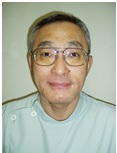
Biography:
Toshimasa Nakada graduated from the Hirosaki University School of Medicine in 1981 and acquired MD in 1988. I give medical care and study as a pediatrician at Aomori Prefectural Central Hospital from 1988. I am also clinical assistant professor of Hirosaki University of Medicine. Recent study is “ Effects of anti-inflammatory drugs on intravenous immunoglobulin therapy in the acute phase of Kawasaki disease “ (Pediatr Cardiol 36:335-339,2015).
Abstract:
Appropriate therapy during the acute phase of Kawasaki disease to prevent large coronary artery lesions (CAL) has not been established. The aim of this retrospective study was to investigate the usefulness of initial intravenous immunoglobulin (IVIG) monotherapy. In total, 200 pediatric patients who received IVIG therapy for Kawasaki disease between 1999 and 2014 at Department of Pediatrics, Aomori Prefectural Central Hospital were enrolled. An initial IVIG regimen of 2 g/kg/day, starting on day 5, was used as first-line therapy when possible. Second-line therapy was additional IVIG therapy, and third-line therapy was an urinastatin infusion or plasma exchange. All patients were divided into two groups. The S group comprised 129 patients who received initial IVIG monotherapy with delayed administration of anti-inflammatory drugs (ADs). The T group comprised 71 patients who received concomitant ADs with IVIG. Initial IVIG therapy resistance occurred in 50 of 200 patients (25%), and 16 patients (8%) received additional IVIG. Four patients received urinastatin and one patient received plasma exchange as third-line therapy. Before the 30th day, the prevalence of CAL was 7% (13/200); after 30 days, it was 3% (5/200). The prevalence of CAL before and after 30 days between the S vs. T groups were 2/129 vs. 11/71 (P<0.001) and 1/129 vs. 4/71 (P=0.055), respectively. Variable factors including IVIG resistance and responsiveness and relapse of the disease were associated with CAL development. Initial single IVIG therapy may be useful for the prevention of large CAL caused by different factors of Kawasaki disease.
Lucia Gemma Delogu
University of Sassari, Italy
Title: Molecular impact induced by different shaped graphene oxide on immune cells
Time : 14:35-14:55

Biography:
Lucia Gemma Delogu has completed her PhD from Sassari University and Post-doctoral studies from University of Southern California. She is Assistant Professor of Biochemistry at the University of Sassari, Italy. She has published more than 21 papers in reputed journals and 9 as first or Senior/Corresponding author.
Abstract:
Graphene oxide (GO) is gaining the interest of the scientific community for its revolutionary future applications i.e. for drug delivery. In this context, the possible immune cell impact of GO is a fundamental area of study for a translational application in medicine. We focused on the effects, on human lymphomonocytes (PBMCs) of two types of GOs, deeply characterized, which differed in lateral size dimension (GO-Small: 140 nm, and GO-Large 4 ïm). To clarify the immune impact of GOs we provided a wide range of assays looking at cells viability, cell activation, cytokines release and gene expression. We let in lights also the impact of GOs on immune response-related 84 genes. GOs didn’t impact the cell viability. In particular, the GO-Small modulated 16 genes (FR>4) compared to only 5 of GO-Large, evidencing a clear lateral dimension-dependent impact on cell activation. We confirmed the size-related effect at the protein level by multiplex ELISA. These evidences were also confirmed by microarray analysis on T and monocytes cell lines. GO-Small impact the immune cell activation, underlined by the over expression of genes such as CXCL10 ligand pathway and CXCR3 receptor. Data also evidenced the GO-Small-induced metabolism modulation in both cell types. Our work represents a comprehensive characterization of different sized GOs on immune cells giving crucial information for the chemical and physical design of graphene for biomedical applications i.e. as a new possible drug delivery systems and nanoimmunotherapy tools.
V. Kalarani
Sri Padmavati Mahila Visvavidyalayam (Women\\\'s University), India
Title: Effect of dietary supplementation of Bacillus subtilis and Terribacillus saccharophillus on the innate immune responses of a tropical freshwater fish, Labeo rohita
Time : 14:55-15:15
Biography:
V Kalarani has completed her PhD from Sri Venkateswara University, Tirupati, Andhra Pradesh, India and Post-doctoral studies in the University of Calgary, Canada. She is the Head and Chairperson Board of studies of Dept. of Biotechnology, S.P. Mahila Visvavidyalayam. She has published more than 40 papers in reputed journals, guided more than 20 Master’s projects and supervising 8 PhD students. She is also serving as an Evaluator / Adjudicator of many research programmes.
Abstract:
Indiscriminate use of antibiotics to prevent and control diseases affecting the health of fish has led to the development and propagation of antibiotic resistant bacteria in the aquatic ecosystems. Amongst the various alternatives proposed, the most widely accepted approach is the use of probiotics to enhance immunity in fish. In this experiment, we have used Bacillus subtilis as probiotic bacteria and studied the effect of dietary administration of B. subtilis (107 cfu /g-1) on the immune and humoral responses of L. rohita fed for 30(B1) and 60(B2) days. The results show that serum phagocytic activity significantly increased by 36%(B1) and 39%(B2); respiratory burst activity increased by 60%(B1) and 90%(B2); Myeloperoxidase activity increased by 26%(B1) and 71%(B2); serum IgM levels increased by 46%(B1) but decreased by 6%(B2) and serum lectins have increased by 20%(B1) and 46%(B2) in fish fed on diet supplemented with B. subtilis compared to those fed on normal diets. Similarly haemagglutination (70% and 90% respectively in B1 and B2 groups) and haemolytic activity (77% and 98% respectively in B1 and B2 groups) also increased significantly in fish fed on B. subtilis supplemented diets in B1 and B2 groups compared to those fed on control diets. Similar experiment was done using Terribacillus saccharophillus, isolated for the first time from laboratory reared L. rohita. It was found that T. saccharophillus (107 cfu /g-1) supplemented diet also significantly increased the immune responses, though to a lesser extent, in L. rohita. The results suggest that T. saccharophillus could also be used as a potent probiont similar to B. subtilis and will have potential applications in fish feed formulations and disease prevention.
Ming-Yow Hung
Taipei Medical University, Taiwan
Title: Innate immunity in cardiology: Vessel and valve
Time : 15:15-15:35
Biography:
Ming-Yow Hung, Assistant Professor has studied coronary artery spasm and aortic stenosis for 10 years, during which he has authored more than 30 peer-reviewed reports. He has served on the editorial board for the Journal of the Taiwan Society of Echocardiography, and Enliven: Clinical Cardiology and Research. He is a Fellow of the American College of Cardiology and the American Heart Association, and has served on several review committees for Acta Cardiologica, Scientific World Journal, JACC: Cardiovascular Interventions, and Enliven: Clinical Cardiology and Research.
Abstract:
Coronary artery spasm (CAS), an intense vasoconstriction of coronary arteries causing vessel occlusion, plays an important role in myocardial ischemic syndromes including angina, acute myocardial infarction, and sudden cardiac death. Smoking, age and high-sensitivity C-reactive protein (hs-CRP) are risk factors for CAS. While high hs-CRP level has recently been found to be an important risk factor for CAS, its relationship with CAS may differ between genders. In patients with low hs-CRP levels, diabetes mellitus has been shown to contribute to CAS development in men but not in women; however, in patients with high hs-CRP levels, there are negative effects of diabetes mellitus and hypertension on CAS development, especially in women. In the mid 2000s, chronic inflammation was shown to be associated with CAS, as evidenced by elevated peripheral white blood cell and monocyte counts, hs-CRP, interleukin-6, and adhesion molecules. Calciï¬c aortic valve stenosis (CAVS) is the most common form of acquired valvular heart disease. About 50% of patients with CAVS do not have coronary artery disease, suggesting related, but unique, pathophysiology. One of these pathways may involve the lipoprotein(a) (Lp[a]), lipoprotein-associated phospholipase A2 (Lp-PLA2), and oxidized phospholipids (OxPL) axis. Recently, a genome-wide association study showed that single nucleotide polymorphism (SNP) rs10455872 at the LPA gene locus was causally related to CAVS. A key proinflammatory property of Lp(a) may be its content of OxPL. Elevated levels of OxPL on apoB (OxPL/apoB) predict death, myocardial infarction, and stroke. Overall, these observations suggest plausible mechanisms through which Lp(a)–Lp-PLA2–OxPL may mediate CAVS.
Seong-Woon Yu
Daegu Gyeongbuk Institute of Science and Technology, Korea
Title: A TSPO ligand Ro5-4864 as an inhibitor of NLRP3 inflammasome
Time : 15:35-15:55
Biography:
Seong-Woon Yu has completed his PhD from Seoul National University, Korea and postdoctoral studies from Johns Hopkins University School of Medicine. He was assistant professor at the Departments of Neurology, Pharmacology and Toxicology in Michigan State University and now is associate professor of the Department of Brain and Cognitive Sciences, DGIST, Daegu , Korea. His research efforts are focused on the mechanisms of cell death of neurons and neural stem cells during neurodegeneration. The molecular mechanisms regulating neuroinflammation is also his main research interest.
Abstract:
Translocator protein 18 kDa (TSPO) is a protein located on the outer membrane of mitochondria. TSPO is expressed mainly in glial cells in the central nervous system and its expression level is highly up-regulated during neuronal injury and neuroinflammation. We previously reported that TSPO acts as a negative regulator of microglia activation. However, it is not known yet whether TSPO is involved in inflammasome signaling. Inflammasomes are multiprotein complexes for caspase-1 activation and IL-1ï¢ processing and implicated in many inflammatory diseases. In this talk, I present the evidence that the prototypical TSPO ligand, Ro5-4864 (Ro5) inhibits NLRP3 inflammasome signaling in THP-1 cells using the canonical LPS-primed/ATP-induced NLRP3 inflammasome model. Ro5 efficiently blocked release of IL-1ï¢ and caspase-1, and reduced ASC speck formation and NLRP3 translocation to mitochondria. Ro5 also attenuated LPS/ATP-induced perturbation of mitochondrial function by preventing generation of mitochondrial superoxide and depolarization of mitochondrial membrane potential. These results indicate that the immune modulatory effect of the TSPO ligand Ro5 is through inhibition of NLRP3 inflammasome signaling, suggesting Ro5 as a promising agent with efficacy for NLRP3 inflammasome-associated diseases.
Simon J Clark
University of Manchester, UK
Title: The role of complement factor H-like and factor H-related proteins in age-related macular degeneration
Time : 15:55-16:15

Biography:
Simon J Clark obtained his BSc in Biochemistry (with Immunology) at the University of Aberdeen in 2002 and subsequently spent a year working in industry on the development of diagnostic tests for cardiovascular disease. In 2003 he matriculated at Oxford to begin his DPhil studies investigating the interaction of complement factor H (FH), an innate immune regulator, with endogenous sugar molecules as a mechanism for host recognition. In 2006, he moved to the Faculty of Life Sciences, University of Manchester, to study further the regulation of innate immunity on extracellular matrices and successfully identified the sugar molecules that FH binds to in Bruch’s membrane, the site of AMD pathogenesis. He now works in the Faculty of Medicine and Human Sciences, University of Manchester, where he has taken up an MRC Career Development Fellowship. Recently, he identified another protein, made by alternative splicing of the FH gene; called factor H-like protein 1 (FHL-1) is actually the main complement regulator in Bruch’s membrane. He is now focusing his work on understanding how FHL-1 and the FHR proteins contribute to immune regulation around the human body.
Abstract:
A number of genetic alterations are associated with an increased risk of developing age-related macular degeneration (AMD): The leading cause of blindness in the western World. Many of the risk modifying mutations and polymorphisms arise in genes involved in the complement cascade, part of a host’s innate immune system. While much work has focused on the Y402H polymorphism in the main complement regulator factor H (FH), increasing evidence suggests this protein does not work alone in protecting Bruch’s membrane in the human eye, an important site of AMD pathogenesis. Factor H-like protein 1 (FHL-1) arises from an alternative splice variation of the CFH gene and retains all of the regulatory activity of FH: FHL-1 is also subject to the Y402H polymorphism. Furthermore, five factor H-related (FHR) proteins also exist and share varying degrees of homology with FH. Genetic changes in the region containing the FHR genes are also associated with AMD, including a protective deletion of the FHR1 and 3 genes. Using specific antibodies and targeted mass spectrometry, we identify the significant presence of FHL-1 in Bruch’s membrane. This is converse to the understanding that FH is the major regulator of complement. In this regard, we demonstrate local expression of FHL-1 and the fact that the full length FH protein is not able to diffuse through Bruch’s membrane from human sera. The presence of FHR proteins also adds weight to the hypothesis that they may well compete with FHL-1 to binding sites in Bruch’s membrane. An imbalance in this fine regulation based on genetics and driven via environmental or age-related factors, will lead to inappropriate complement activation and local inflammation. Here, the author will talk on current understanding of AMD pathogenesis, present new data and discuss therapeutic strategies for treating this devastating disease
Biography:
Melissa B. Aldrich is part of a team of scientists at the Center for Molecular Imaging of the Brown Institute for Molecular Medicine at UTHealth in Houston, Texas. Using near-infrared fluorescence lymphatic imaging (NIRFLI), the team conducts pre-clinical and clinical studies of lymphatics in primary and secondary lymphedema, lipedema, wound healing, rare adipose and venous disorders, and chylothorax. Dr. Aldrich’s education includes a B.A. in biochemistry from the University of Texas at Austin, a M.B.A. from the University of Houston, and a Ph.D. in immunology from the University of Texas Health Science Center-Houston. Her research work has shown that inflammatory cytokines affect lymphatic flow systemically, and that breast cancer-associated lymphedema is a systemic, progressive disease.
Abstract:
The response of the lymphatic system to inflammatory insult and infection is not completely understood. A chance observation in a human clinical study suggested that inflammation can systemically affect lymphatic pumping. Using a near-infrared fluorescence (NIRF) imaging system to noninvasively document propulsive function, we noted the short-term cessation of murine lymphatic propulsion as early as 4h following LPS injection. Notably, the effects were systemic, displaying bilateral lymphatic pumping cessation after a unilateral insult. Furthermore, IL-1β, TNF-α, and IL-6, cytokines that were found to be elevated in serum during lymphatic pumping cessation, were shown separately to acutely and systemically decrease lymphatic pulsing frequency and velocity following intradermal administration. Surprisingly, marked lymphatic vessel dilation and leakiness were noted in limbs contralateral to IL-1β intradermal administration, but not in ipsilateral limbs. The effects of IL-1β on lymphatic pumping were abated by pre-treatment with an inhibitor of inducible nitric oxide synthase, L-NIL (N-iminoethyl-L-lysine). The results suggest that lymphatic propulsion is systemically impaired within 4h of acute inflammatory insult, and that some cytokines are major effectors of lymphatic pumping cessation through nitric oxide-mediated mechanisms. These findings establish cytokines as mediators of lymphatic function in inflammatory and infectious states, and may have implications in the understanding of lymphedema and lipedema.
Lucia Gemma Delogu
University of Sassari, Italy
Title: Molecular impact induced by different shaped graphene oxide on immune cells
Biography:
Lucia Gemma Delogu has completed her PhD at the age of 26 years from Sassari University and postdoctoral studies from University of Southern California. She is assistant professor of Biochemistry at the University of Sassari, Italy. She has published more than 21 papers in reputed journals and 9 as first or senior/corresponding author.
Abstract:
Graphene oxide (GO) is gaining the interest of the scientific community for its revolutionary future applications i.e. for drug delivery [Geim AK et al. Nature Materials 2007]. In this context, the possible immune cell impact of GO is a fundamental area of study for a translational application in medicine [Goldberg MS, Cell 2015; Orecchioni M. et al. JTM 2014]. We focused on the effects, on human lymphomonocytes (PBMCs), of two types of GOs, deeply characterized, which differed in lateral size dimension (GO-Small: 140nm, and GO-Large 4ïm). To clarify the immune impact of GOs we provided a wide range of assays looking at cells viability, cell activation, cytokines release and gene expression. We let in lights also the impact of GOs on immune response-related 84 genes. GOs didn’t impact the cell viability. In particular, the GO-Small modulated 16 genes (FR >4) compared to only 5 of GO-Large, evidencing a clear lateral dimension-dependent impact on cell activation. We confirmed the size-related effect at the protein level by multiplex ELISA. These evidences were also confirmed by microarray analysis on T and monocytes cell lines. GO-Small impact the immune cell activation, underlined by the over expression of genes such as CXCL10 ligand pathway and CXCR3 receptor. Data also evidenced the GO-Small-induced methabolism modulation in both cell types. Our work represents a comprehensive characterization of different sized GOs on immune cells giving crucial information for the chemical and physical design of graphene for biomedical applications i.e. as a new possible drug delivery systems and nanoimmunotherapy tools.
Robert H Schiestl
University of California, USA
Title: Characterization of intestinal inflammation-induced systemic genotoxicity and its potential use as a biomarker of disease activity
Biography:
Robert H Schiestl has obtained his PhD from the University of Vienna. He was a Post-doctoral fellow at Edmonton, Alberta, Rochester, NY, and Chapel Hill, NC before working as a Professor at Harvard, where he stayed for 10 years. Since 15 years, he is working as a Professor at UCLA with 190 publications, 6 press releases, 10 patents and 2 startup companies.
Abstract:
To determine susceptibility of subpopulations of cells in the peripheral blood as well as of peripheral lymphoid organs to several types of DNA damage in genetic mouse models of spontaneous chronic intestinal inflammation and to determine the sufficiency of tumor necrosis factor α (TNF-α) in inducing this genotoxicity. By determining correlations of DNA damage to disease activity, we hope to substantiate systemic genotoxicity as a biomarker of inflammatory activity in intestinal inflammation. Peripheral blood subpopulations were isolated via magnetic bead sorting and cells from peripheral lymphoid organs were isolated incolitic IL-10 mice of various disease activity (3 and 6 months of age), Gαi2 mice (3 months of age) and in wild-type mice with no intestinal inflammation. DNA strand breaks were measured in cells with the alkaline comet assay with hOGG1 incubation to determine oxidative base damage and DNA double strand breaks specifically were quantified by γH2AX foci immune-staining. Recombinant mouse TNF-α or saline was injected (500 ng/mouse) into the tail vein of wild-type mice and peripheral blood was analyzed for DNA damage at several time points post injection. DNA single and double strand breaks were found in subpopulations of cells in the peripheral blood as well as in the peripheral lymphoid organs, which correlated to disease activity of mice with intestinal inflammation. CD4 and CD8 T-cells seemed most sensitive to DNA damage. TNF-α was sufficient to induce DNA damage in wild-type mice. Chronic intestinal inflammation induces systemic DNA damage, in which CD4 and CD8 T-cells are the most sensitive. TNF-α plays a role in inducing this damage though further mechanisms remain investigated. Levels of DNA damage in the peripheral blood correlated strongly to inflammatory activity and severity of disease, making DNA damage to leukocytes a good biomarker to diagnose and monitor disease in inflammatory bowel disease patients.
Biography:
Ammira S Al-Shabeeb AKIL has completed her PhD at 2010 and postdoctoral studies from University of New South Wales and University of Sydney, faculty of Medicine. She is assistant professor of molecular Immunology and virology, at University of Sharjah, UAE and also a visiting assistant professor at University of New South Wales, Sydney Australia. She has published more than 20 paper and conference proceeding in reputed journals and also a member of several scientific comities and organizations.
Abstract:
There is no longer a question as to whether viruses contribute to the pathogenesis of type 1diabetes (T1D). We now have evidence using next generation sequencing (NGS) of enteroviruses EVs isolated from children with islet autoimmunity (IA) demonstrating up to 10% change in the viral genome at the nucleotide level 10 days after inoculation into human islets. NGS:Full-length EV genomes were amplified as a single 7.4 kb fragment by RT-PCR, and NGS performed using the Illumina MiSeq sequencer. Phylogenetic analysis of the full-length viral consensus sequences performed using the neighbour joining and maximum likelihood method. Trees were constructed from alignment of complete genome sequences by using best-fit models and visualised using FigTree. Comparisons were performed with Viral Epidemiology Signature Pattern Analysis (VESPA). Two of the EVs from IA+ cases had an N to S amino acid (AA) substitution within the 2C protein, which became dominant after 10 days passage in the islets. EV isolate from another IA+ case has 5 AA differences within the capsid protein VP4 at residues 3, 16, 18, 50 and 61. VP4 has been shown in vitro to be a target of human antibodies that enhance CVB induced synthesis of interferon α (IFN-α). Antibodies directed towards the region 11-30 of the VP4 capsid enhance infection of peripheral blood cells with CVB4 in vitro. Therefore, our preliminary data suggest VP4 may be a determinant of ‘diabetogenicity’. Our novel NGS data will contribute to vaccine development from a global perspective and then reduce the future burden of T1D.
Biography:
Abstract:
The aim of this study was to compare the effects of aerobic exercise aerobic swimming insists on serum IL-6 and TNF-a and HS. CRP young women. This is a quasi-experimental study population included 100 women swimmers were in Mashhad. Age range 25 to 30 years and have 4 basic swimming skills were adequate. Total of 28 patients were randomly assigned into 2 groups (two groups of 14 each aerobic and anaerobic exercise, swimming) and 10 patients in the control group. Blood samples were taken to measure the factors and analyzing the data using descriptive and inferential statistics, Kolmogorov-Smirnov test and ANOVA (ANOVA) was conducted. The following results were obtained:
Serum IL-6 levels between subjects, there were no significant differences(p=0/019).
Serum levels of TNF-a significant difference between subjects there. (p=0/005)
Between There were no significant differences in serumlevel of HS- CRP participants (p=0/001).
Conclusion:
According to this study, aerobic exercise and anaerobic swimming reduces the level of IL-6 and TNF-a and HS. CRP in subjects that this reduction was statistically significant.
Keywords: IL-6 and TNF-a and HS. CRP
Iulia Popescu
University of Pittsburgh School of Medicine, USA
Title: T-bet: Eomes Balance,Effector Function and Proliferation of CMV-specificCD8+ T-cells during Primary Infection Differentiates theCapacity for Durable Immune Control

Biography:
Abstract:
CMV remains an important opportunistic pathogen in solid organ transplantation, particularly in lung transplant recipients (LTRs). LTRs mismatched for CMV (donor+/recipient-; D+R-) are at high-risk for active CMV infection and increased mortality, however the immune correlates of viral control remain incompletely understood. We prospectively studied 23 D+R- LTRs during primary CMV infection to determine whether acute CD8+ T-cell parameters differentiated the capacity for viral control in early chronic infection. T-box transcription factors expression patterns of T-bet >Eomes differentiated LTR controllers from viremicrelapsers, and reciprocally correlated with granzyme B loading, and CMV phosphoprotein 65 (pp65)-specific CD8+IFN-ï§+ and CD107a+ frequencies. LTR relapsers demonstrated reduced CD8+Ki67+ cells ex vivo and substantially impaired CD8+pp65-specific in vitro proliferative responses at 6 days, with concomitantly lower pp65-specific CD4+IL-2+ frequencies, as compared to LTR controllers. However, CMV-specific in vitro proliferative responses could be significantly rescued, most effectively with pp65 antigen and exogenous IL-2, resulting in an increased T-bet:Eomes balance, and enhanced effector function. Using class I CMV tetramers, we observed similar frequencies between relapsers and controllers, though reduced T-bet:Eomes balance in tetramer+ cells from relapsers, along with impaired CD8+ effector responses to tetramer-peptide re-stimulation. Together, these data show impaired CMV-specific CD8+ effector responses is not for complete lack of CMV-specific cells, but rather, underscores the importance of the T-bet:Eomes balance, with CMV-specific proliferation a key factor driving early T-bet expression and effector function in CD8+ T cells during primary infection, and differentiating the capacity of high-risk LTRs to establish immune control during early chronic infection.
Debasis Sahu
CSIR-Institute of Genomics and Integrative Biology, India
Title: Novel peptide inhibitors of human tumor necrosis factor-α: Molecular modelling and in-vitro assays
Biography:
Abstract:
TNF-ï¡ plays a very important role in the progression of various inflammatory diseases including rheumatoid arthritis. This study aims towards the designing, synthesis and evaluating the effects of the peptide inhibitors of TNF-ï¡. Trimerized form of TNF-α is the active one, which can bind to receptor resulting in the progression of inflammatory cascade. The phenomenon of trimer formation was targeted for designing the inhibitors. The peptides were designed in silico using various bioinformatic tools and synthesized by solid phase peptide synthesis (SPPS) process. The anti-TNF activity of four different peptides (peptide 1, 2, 3 and 4) was checked in-vitro. Effect of peptide-2 was found to show the most significant anti-TNFα activity. TNF-α induced cell death of Wehi-164 cells was evaluated through MTT assay. The peptide-induced inhibition of TNF-a resulted in reduced cell death and increased viability. The TNF-α induced nuclear translocation of NF-kB was visualized using immune cytochemical analysis using A549 cells. The Western blotting of the nuclear lysate showed under expression of NF-κB in the TNF-stimulated cells with peptide inhibition as compared to the cells untreated with peptides. This result was fairly corroborated with the Electrophoretic Mobility Shift Assay (EMSA) test of the nuclear lysates of the experimental cells. Peptide-2 showed a dose dependent inhibition on the TNF-α activity, with maximum effect at 200 μM of the peptide concentration (p < 0.05). No significant cytotoxicity was observed when stimulated with the peptides with the concentrations ranging between 50 and 400µM. To conclude, peptide-2 showed the highest anti- TNF activity among all the peptides tested and this peptide-2 appears to have potential of being a peptide drug, for which in-vivo studies and further trials are required.
Biography:
Abstract:
Major depressive disorder (MDD) and schizophrenia are associated with inflammatory processes. Studies have shown that these disorders exhibit increase in the level of one or more proinflammatory markers. However, these studies did not exclude patients with obvious inflammation (i.e., CRP46 mg/L). Therefore, a comprehensive study should include those inflammatory disorders. In the present study, the inflammatory natures of MDD and schizophrenia were investigated. To achieve this goal, serum levels of interleukin-6 (IL-6), interleukin-18 (IL-18), tumor necrosis factor alpha (TNFα), and soluble interleukin 2 receptor (sIL-2R) in depressed and schizophrenic patients were obtained and compared with those of the control group. Results showed a significant increase (po0.05) in serum levels of IL-6, IL-18, TNFα, and sIL-2R in MDD and schizophrenic patients compared with the control group. Also patients with schizophrenia group showed higher levels of the inflammatory markers than MDD and control groups. The current study concluded that the immunological response in the MDD and schizophrenic patients groups was significantly stimulated. These disorders may be considered an inflammatory disorder because of elevated levels of proinflammatory cytokines in spite of lacking an overt inflammation. Furthermore results of this study suggested the possibility of the use of anti-inflammatory drugs as adjuvant therapy in schizophrenic and depressive disorders.
Hashaam Akhtar
National University of Sciences and Technology, Pakistan
Title: Expression of IFN-Lambda receptor (IFN-λRa) in mononuclear phagocyte cells (MPC) and its influence by the levels of newly discovered type III interferon lambda 4 (in Vitro study)
Biography:
Abstract:
IFNλR1 and IL10R2 collectively construct a heterodimer, which is an acknowledged functional receptor for all type III interferons (IFNs). Expression of IFNλR1 is highly tissue specific, which can help in making type III IFNs as drug of choice as compared to its analogous, type I IFNs for treating hepatitis C in the near future. Although, expression of IFNλR1 also varies with the concentration of type I IFNs, but in this study it was shown that the expression of IFNλR1 varies with the protein titers of IFN-α, IFN-λ3 and the newly discovered IFN-λ4. High dosage of IFN-α reduces the expression of IFNλR1 in HepG2 cells, which can affect the antiviral activity of type III IFNs in vivo. We premeditated an experimental strategy to differentiate monocytes into DC, type I and type II macrophages in vitro and quantified the expression of the IFNλR1 by qPCR. The exposure of newly discovered IFN-λ4 to macrophages and DCs also raised the expression of its own receptor, which shows that expression of IFN-λ4 protein in hepatitis C patient may augment type I treatment and help ease off viral titers. The results of this study may help us in contributing some understanding towards the mechanisms involved in the selective expression of IFNLR1 and exceptionalities involved.
Manuel Verdecia Jarque
Hospital Infantil Sur, Cuba
Title: Immunotherapy with nimotuzumab in pediatric brain tumors
Biography:
Manuel Verdecia Jarque, MD, MSc is an Assistant Professor and has 18 years of experience as pediatric oncologist. He is the head of Oncopediatric Service of Infantil Sur hospital and the Provincial Chief of Childrenhood Cancer Control Program. He has published 10 papers in reputed journals and is the member of both IABC and Cuban Oncopaediatric special group.
Abstract:
The pediatric cancer prevails less than that in adults, but its tendency is to increase. In Cuba, 400 new cases arise each year, and between 50 and 60 in our Service are diagnosed from 2005. Brain tumors occupy the third place of all pediatric tumors, after the leukemia and lymphomas. 50-60 % of brain tumors originate in back cavity (astrocytomas, medulloblastomas and ependynomas), whereas 40-50 % remaining are supratentorial. Primitive neuro ectodermal tumors appear in any brain space. This study shows the experiences of a clinical trial, in which is combined the human monoclonal antibody Nimotuzumab with conventional oncologic therapies in intrinsic tumors of cerebral stalk and other localizations. The results show that female sex, astrocytoma (histologic variety) and infratentorial (topographically) prevail, in agreement with the literature. 50% of treated patients have a satisfactory response, whereas 50% remaining disease progression. The best response is obtained for infratentorial tumors. In conclusion, Nimotuzumab, as immunotherapy is feasible for pediatric patients with brain tumors and therefore may constitute another therapeutic option for them.

Biography:
Ampadu Yaw Andrew has completed his Master’s education in Biomedical Science in the University of Chester, UK. He has participated in different scientific academies such as, one organized by the Hannover Medical School in Hannover, Germany. Currently he is working as a lab manager in 37 military hospitals, at the Department of Pathology.
Abstract:
Higher temperature ranges have been found to be associated with the death of cells and the increase of intracellular HSP 72 in Jurkat cells. HSP 72 relates with membrane lipids and are released from cells when heat shocked. Depending on the localization of HSPs on the cell surface, either membrane bound or embedded, HSPs will possibly induce apoptotic cell death or protect cells from dying and other damages related to cellular stress. They may bring out the physiological response of the innate immunity such as the secretion of cytokine and cell activation, thereby promoting roles in stimulating cell protection, death and immune activation under normal physiological conditions and on exposure to stress stimuli. HSP72 is a significant marker for various environmental stresses and diseases; therefore this research seeks to describe the intracellular expression of endogenous HSP 72 by flow cytometry, under control conditions and in response to stress using various heat treatments with the control temperature set at 37°C.
Ahmed M Elbana
King Fahd Military Medical Complex, KSA
Title: Endogenous bone marrow stem cells mobilization in rats: Its potential role for homing and repair of the damaged inner ear
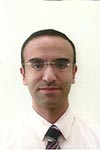
Biography:
Ahmed M Elbana graduated in 2004 with Bachelor's degree in Medicine and Surgery from Alexandria University, Egypt. He worked as House Officer in Alexandria University Hospital till March 2006, ENT Resident in Alexandria University Hospital from Jan 2007 till Jan 2010, and as an ENT Registrar in Alexandria University Hospital from June 2010 till June 2011. He finished his Master degree in Otorhinolaryngology from Alexandria University, Egypt on June 2011 and is working as ENT Registrar in King Fahd Military Medical Complex (KFMMC) Dhahran in Kingdom of Saudi Arabia from 2011 to till now.
Abstract:
Objective:
This study assessed the possibility of mobilizing endogenous bone marrow derived stem cells (SCs) in rats using Granulocyte colony stimulating factor (G-CSF) to induce regeneration and repair to experimentally damaged inner ear hair cells induced in rats by intratympanic Amikacin injection.
Material & Methods:
The study included thirty adult Sprague Dawley male rats. Experimental induction of inner ear damage was done by repeated intratympanic injection of amikacin sulfate. Mobilization of bone marrow SCs was provoked by subcutaneous injection of GCSF. Cochlear integrity, induction of hearing loss and functional recovery of sensory hearing loss were assessed using Distortion Product Otoacoustic Emission (DPOAEs). The morphological alteration and recovery of the organ of Corti was assessed histologically using the light and scanning electron microscopes.
Results:
After six month duration, there was improvement in 50% of the sensorineural DPOAE results. Functional recovery coincided with the histological repair of structural components of organ of Corti.
Conclusion:
SCs mobilization by G-CSF is a promising alternative method for replacement therapy in sensorineural hearing loss.
Manuel Verdecia Jarque
Hospital Infantil Sur. Santiago de Cuba, Cuba.
Title: Immunotherapy with Nimotuzumab in pediatric brain tumors
Biography:
Manuel Verdecia Jarque M.D., MSc., Assistant Professor have 18 years of experience as pediatric oncologist. Head of Oncopediatric Service of Infantil Sur hospital. Provincial chief of Childrenhood Cancer Control Program. He has published 10 papers in reputed journals. Member of both IABC and Cuban Oncopaediatric special group.
Abstract:
The pediatric cancer prevails less than that in adults, but its tendency is to increase. In Cuba, 400 new cases arise each year, and between 50 and 60 in our Service are diagnosed from 2005. Brain tumors occupy the third place of all pediatric tumors, after the leukemia and lymphomas. 50-60 % of brain tumors originate in back cavity (astrocytomas, medulloblastomas and ependynomas), whereas 40-50 % remaining are supratentorial. Primitive neuroectodermal tumors appear in any brain space. This study shows the experiences of a clinical trial, in which is combined the human monoclonal antibody Nimotuzumab with conventional oncologic therapies in intrinsic tumors of cerebral stalk and other localizations. The results show that female sex, astrocytoma (histologic variety) and infratentorial (topographically) prevail, in agreement with the literature. 50 % of treated patients have a satisfactory response, whereas 50 % remaining disease progression. The best response is obtained for Infratentorial tumors. In conclusion, Nimotuzumab, as immunotherapy, is feasible for pediatric patients with brain tumors and therefore may constitute another therapeutic option for them.
Biography:
Sushil Suri has completed his MD Medicine from Kanpur University and special training in Allergy and Immunology from CSIR and VPChest Institute Delhi. Elected Life Member of the IndianCollege of Allergy & Applied Immunology: CONFERENCES Year Conference Venue 1995 Indo-US conference on Recent New Delhi, India Advances in Pediatric Pulmonology & Tuberculosis National Conference on Sleep AIIMS, New Delhi, India. Research. He is the Ex Associate Profesor Medicine, Malaka Manipal Medical College,Malaka ,Malaysia.Presently Consultant Allergist, Suri Medical Foundation Hospital, Lucknow,U.P.India and is faculty at Career Institute of Medical Sciences and Hospitals, Lucknow He has published more than 6 papers in reputed journals.
Abstract:
The work of Kasliwas et al(1959) and Shivpuri et al(1971) have proved beyond doubt that there is a definite correlation between pollen peaks and symptomatology of the patients of respiratoty allergy. With these factors in mind the present study was conducted with the aims - to clinically evaluate the cases of bronchial asthma, to know the spectrum of allergens by skin testing in these cases(intradermal skin tests) and to find out seasonal and climatic variations in these cases. The patients were prepared for intradermal skin test as per Shivpuri et al (1964)The intradermal skin tests were performed by means of a tuberculin syringe and 26 gauge (1â€length)short bevelled needle.A negative control test was done in the similar manner with 0.01ml of buffer saline ( the diluent of the antigen)and marked as “C’. A positive control test was done by Histamine phosphate solution(100 microgram/ml) and marked as “Hâ€.Interpretation was done as per Shivpuri’s criteria(Shivpuri1962,1969)The 2 to 4 reactions were taken as “markedly positiveâ€.This study showed that the prevalance of allergic manifestations were higher in first degree relatives(50%)than the second degree relatives(8%)of the patients . In this study the pollen antigens which gave “significant positive reactionsâ€(and there clinical correlation with the patient’s history)in the descending order of significance were as Cassiasiamea, Adhantoda, Morus, Parthenium, Artemesia, Argemonemaxicana, Cannabisoccidentalis, Rumex, Asphodelous, Gynandropsis, Amaranthus, Cenchrusalbum, Ricinuscommunis, Crataeva nurvuala, Melia, Kigelia, Prosopsis, Pennisetum, Dodonaea, Azadirechta, Putranjiva rox-burghii.The extensive botanical and aero-biological surveys with clinical evaluation of a very largre number of cases of alleric bronchial asthma should be carried out in future in order to draw the exact polen calender of this region.

Biography:
Nathali Kaushansky, PhD, is a staff scientist in the Neurobiology Department at the Weizmann Institute of Science. She received her BSc in Chemistry and MSc in Biomedical Engineering from the Technion – Israel Institute of Technology, Haifa, Israel. She completed her PhD studies and post-doctoral training in the Immunology Department in The Weizmann Institute of Science. In the last 10 years her work has focused on characterization of autoimmune T- and B-cells against myelin and neuronal target antigensin Multiple Sclerosis (MS). Her study aims to establish a highly specific “multi – targeting†immunomodulatory approach via co-antagonizing of most known and potentially pathogenic T-cell autoreactivities in MS. The primary goals of her recent research were 1: studying mechanisms underlying immunomodulation by this multi epitope targeting agent (specifically designed artificial multi-epitope protein (Y-MSPc)-recently published) and 2: Studying immunogenetics of susceptibility to MS, mainly at defining HLA-DR2-related epitopes of the different most important myelin target antigens in MS.
Abstract:
Multiple sclerosis (MS) is a chronic inflammatory disease of the CNS, associated with complex anti-myelin autoimmunity. Among all approaches proposed for MS therapy, an approach that neutralizes only the pathogenic T cells reacting against myelin, while leaving the innocent immune cells intact, is the ultimate goal in the immune-specific therapy for MS. The multiplicity of primary target antigens, along side the dynamic nature of autoimmunity in MS, whereby the specificity of anti-myelin pathogenic autoreactivities may shift or expand in the same patient with disease progression, impose major difficulties in devising immune-specific therapy to MS. To overcome this multiplicity and the potential complexity of pathogenic autoreactivities in MS, we have put forward the concept of concomitant multi-antigen/multi-epitope targeting as, a conceivably more effective approach to immunotherapy of MS. We constructed an EAE/MS-related synthetic human Target Autoantigen Gene (MS-shMultiTAG) designed to encode in tandem only EAE/MS related epitopes of all known encephalitogenic proteins. The MS–related protein product (designated Y-MSPc) was immunofunctional and upon tolerogenic administration, it effectively suppressed and reversed EAE induced by a single encephalitogenic protein. Furthermore, Y-MSPc also fully abrogated the development of “complex EAE†induced by a mixture of five encephalitogenic T-cell lines, each specific for a different encephalitogenic epitope of MBP, MOG, PLP, MOBP and OSP. Strikingly, Y-MSPc was consistently more effective than treatment with the single disease-specific peptide or with the peptide cocktail, both in suppressing the development of “classical†or “complex†EAE and in ameliorating ongoing disease. Overall, the modulation of EAE by Y-MSPc was associated with energizing the pathogenic autoreactive T-cells, downregulation of Th1/Th17 cytokine secretion and upregulation of TGF-b secretion. Moreover, we show that both suppression and treatment of ongoing EAE by tolerogenic administration of Y-MSPc is associated also with a remarkable increase in a unique subset of dendritic-cells (DCs), CD11c+CD11b+Gr1+-myeloid derived DCs in both spleen and CNS of treated mice. These DCs, which are with strong immunoregulatory characteristics and are functional in down-modulation of MS-like-disease displayed increased production of IL-4, IL-10 and TGF-b and low IL-12. Functionally, these myeloid DCs suppress the in-vitro proliferation of myelin-specific T-cells and more importantly, the cells were functional in-vivo, as their adoptive transfer into EAE induced mice resulted in strong suppression of the disease, associated with a remarkable induction of CD4+FoxP3+ regulatory cells. These results, which highlight the efficacy of “multi-epitope-targeting†agent in induction of functional regulatory CD11c+CD11b+Gr1+myeloid DCs, further indicate the potential role of these DCs in maintaining peripheral tolerance and their involvement in downregulation of MS-like-disease.
Bavikar Suhas
Kamalnayan Bajaj Hospital, India
Title: Antibody mediated rejection of renal transplant- clinico-pathological correlation
Biography:
Abstract:
Context
- Treatment in antibody mediated rejection of kidney allografts - responders and non responders.
Objective - Antibody mediated ( C4d positive and or DSA by luminex positive ) rejection vs T cell mediated rejection in 81 graft biopsies done over 3 year in 138 kidney transplant recipients - comparison for treatment outcomes
Data Source - Authors experience , histopathology slides, DSA testing by luminex Reports, Treatment and follow up records of kidney transplant between 2008 and 2011 in kamalnayan Bajaj Hospital, Aurangabad
Observations:
Definative diagnosis of antibody mediated rejection was made if some of the following 3 observations were noted but not all were present 1. morphological evidence of tissue injury existed in 79 /81 biopsies, 2 biopsies were reported as essentialy normal. 2. C4d positivity - immunopathologic evidence for antibody action was noted in 18/79, 22 /79 had T cell mediated acute rejections, 11 of these with borderline changes, remaining were CNI toxicity and nonspecific IFTA 3. serologic evidence for circulating donor specific antibody was positive in 14/79 (MFI values > 3000 in either anti class 1 or class 2 IgG antibody ) .
Effective treatment given was methylprednisolone 500 mg daily for 3 days started on suspician of rejection , sending for graft biopsy with c4d staining in all before first dose of pulse steroids . C4d staining positive cases with positive DSA in 3 first 30 post-operative day period cases recd. rabbit thymoglobulin 3 mg/kg over 3 days and 5 mg/kg over 5 days in one case. All these patients recovered. late onset after 3 months of transplant to 3 year - 5/14 DSA +, C4d positive recipients were treated by 4 sessions of daily Plasmapheresis removing 2 litre each time and , low dose ivig ( 100 mg/kg/day after TPE ) with 1 gm of rituximab after last plasmapheresis . Bortezomib 1.2 mg/m2 on day 1,4,7,11 and repeat courses with dsa titres follow up were used in 5 chronic humoral denovo antibody mediated rejections with beneficial effects in 2 cases - DSA dropped to MFI < 1000 Class 1 and class 2 IgG with improvements in proteinuria and stabilisation of creatinine
Conclusion
Antibody mediated rejections with dsa positivity behaved differently to treatment in immdte post-operative period (4/14recovered) , late onset acute rejections ( 5/14 did not respond - 1 died, 4 progressed to end stage ) and chronic ,denovo antibody mediated rejection (5/14 had creeping creatinine -progressing very slowly )
Treatment responders and nonresponders were analysed for clinical presentations, dsa titres, side effects of intervention, and histopathological details
Sabir Hussain
COMSATS Institute of Information Technology, Pakistan
Title: TNF-alpha promoter region polymorphism and the risk of familial coronary artery disease
Biography:
Abstract:
A case–control and trio-families study was performed to establish a potential association between TNF-alpha gene promoter SNPs at -308 and -238, and occurrence of CAD in a Pakistani population. In the first phase, 150 patients and 150 controls were enrolled in the case–control association study. In the second phase, heritability of susceptible alleles was investigated from 88 trio-families with CAD affected offspring. Biochemical analysis of lipids and hs-CRP was carried out spectrophotometrically, while serum TNF-alpha concentrations were determined by enzyme-linked immunosorbent assay. Genotyping of the TNF-alpha SNPs were determined by PCR-RFLP method. Elevated serum TNF-alpha and hs-CRP was observed from CAD vs. controls (P < 0.0001; for both). The evaluation of TNFalpha-308G>A polymorphism in case – control studies revealed that the said SNP was significantly associated with the increased risk of CAD. The findings demonstrated a significant link between the TNF-alpha variant allele A at -308 and CAD (P = 0.0035), whereas the -238 SNP was not associated with the disease. Haplotype A–G of the TNF-alpha gene at -308G>A and -238G>A showed higher frequency in the patient group compared with controls (P < 0.05). Moreover, the data showed preferential transmission of the disease susceptible allele A at TNF-alpha-308 from parent to affected offspring in a trio-family study (P < 0.0001). The current research leads to conclusion that the TNF-alpha-308G>A polymorphism is associated with CAD in the study population. Furthermore, for the first time, we showed that the TNF-alpha-308A allele was significantly associated with the familial CAD in our high risk population.
Angel A Justiz Vaillant
University of the West Indies, Jamaica
Title: HIV and cervical cancer in Jamaica
Biography:
Angel A Justiz Vaillant is a medical doctor who has completed his PhD at the age of 35 and has more than 20 publications in reputed journals.
Abstract:
The Human Papilloma Virus (HPV) and Human Immunodeficiency Virus (HIV) are both sexually transmitted infections, which have impacted the prevalence of cervical dysplasia and cancer in women. Infections with one of these viruses can facilitate infection with the other. In Jamaica cervical cancer is seen in 27.5 per 100, 000 women making it the second leading cause of cancer death in this population only to breast cancer as a cause of death in women with cancer. Our study investigates the sero prevalence of anti-HIV antibodies in women with abnormal pap smears in Jamaica to determine the influence of HIV on cervical dysplasia. Only patients with positive confirmatory tests were classified as HIV positive. Enzyme-Linked Immunosorbent Assay (ELISA) was used for screening while the Western blot was used for confirmation. Sero-prevalence of anti-HIV antibodies in women with abnormal pap smears was 0.85%. The preliminary results of HIV sero prevalence in women with abnormal pap smears may be low in Jamaica because of the success of the HIV/AIDS programme. A larger study can be done in the future and be representative of the Jamaica population, since the present study has as a limitation a smaller number of controls in comparison to cases. The findings reported do not support the hypothesis that HPV infection facilitates HIV infection in the studied population. It is the first study of its class reported in the Caribbean. It has been postulated that HPV infections may account for the cervical dysplasia despite the low prevalence of HIV association in the women with abnormal pap smears and that persistent HPV and to a lesser extent the HIV is responsible for the prevalence of abnormal pap smears in Jamaica. A limitation of the study was that the control group was smaller than that expected for 3 million’s population but a larger study can be done in the future.
- .International Symposia: Apitherapy in Immune System
Location: Windsor - I

Chair
Ahmed G Hegazi
National Research Center, Egypt
Session Introduction
Ahmed G Hegazi
National Research Center, Egypt
Title: Role of cytokines in Apitherapy

Biography:
Ahmed G Hegazi worked as a Professor of Microbiology & Immunology, National Research Center National Research Center, Dept. Parasitology, 1997-2000, Chair of Faculty of Medicine, Zagazig University, 1981-1997, part-time Professor and Supervisor of Immunology Section, National Research Center, 1990- up till now. He is also Prof. of Microbiology & Immunology, African Federation of Apiculture Associations (AFAA), 2001- up till now, Standing Commission on Apitherapy (APIMONDIA), 1999 - up till now, Member of Standing Scientific Committee, National Research Center, 1998 –up till now. He was awarded the Excellent Medal of the First Class, 1995, received the Senior Scientist Prize of National Research Center, 1996, and won The Second Best Research Paper award from International Congress of Propolis, Argentina, 2000. He has published in Egyptian Journal of Immunology, 1995, was in the Editorial Board of The Egyptian Association of Immunologists, 1992 –1997, Secretary General, Referee in 37 international journals patents: 4 Patents Educational Activities. He has published 193 articles in national and international scientific journals, 6 books in English and 7 books in Arabic.
Abstract:
Apitherapy (the term comes from the Latin apis, which means "bee."), or bee therapy, is the use of honey bee products for therapeutic purposes. Bee venom, bee pollen, raw honey, royal jelly, and propolis are products from bees that are generally considered to have medicinal effects. Now days the apitherapy has great interest of biologist, medical doctors and scientist due to their biological and phytochemical as well as pharmacological activities, so the aim of this review was to through more light on the role of bee products and their influence on cytokines. The term cytokine encompasses a large and diverse family of polypeptide regulators that are produced widely throughout the body by cells of diverse embryological origin. Cytokines participate in many physiological processes including the regulation of immune and inflammatory responses. Cytokines include chemokines, interferons, interleukins, lymphokines, tumor necrosis factor but generally not hormones or growth factors. Cytokines are produced by a broad range of cells, including immune cells like macrophages, B lymphocytes, T lymphocytes and mast cells, as well as endothelial cells, fibroblasts, and various stromal cells; a given cytokine may be produced by more than one type of cells. They act through receptors, and are especially important in the immune system; cytokines modulate the balance between humoral and cell-based immune responses, and they regulate the maturation, growth, and responsiveness of particular cell populations. Some cytokines enhance or inhibit the action of other cytokines in complex ways. Bee products contain physiologically active substances from floral origin of honey bee and plants origin. Bee products act upon both innate and adaptive immune response. At different levels, in the human innate response, these compounds suppress DNA synthesis, decrease proinflammatory cytokine synthesis (IL-2, IL-12 and IL-4), inactivate both the classical and alternative complement pathway, and decrease superoxide anion production in rabbit neutrophils. In adaptive immune response, propolis and honey induce the increase of antibody production by plasma cells, enhance the secretion of TGF-β after the activation of T regulatory cells.
Amber Rose
(Board Certified NCCAOM), LMSW, USA
Title: Innovative effects of bee venom therapy on Lyme disease: A pioneering study

Biography:
Amber Rose, PhD., L. Ac. (Board Certified-NCCAOM), LMSW, is an expert, pioneer, and maverick in the field of immunology. Her approach to healing is unlike anything you have ever seen before. Her Bee Venom research goes back 22 years and she also has 30 years of experience as an acupuncturist. Dr. Rose has treated over 55,000 patients with Lyme, MS, HIV/AIDS, CFS, Fibromyalgia, Lupus, ALS, Parkinson’s, Arthritis, and chronic pain. She had a free clinic in Bethesda, MD for four years. Her NEW book, Pioneers: Healing Lyme with Bee Venom Therapy was released in August 2015.
Abstract:
Objective: Examine Effects of Bee Venom Therapy on 60 Lyme Patients. Methods: 60 patients with Lyme, their ages ranging between 25-68 were divided into two groups. Group 1 (40 patients) were treated with the Bee Venom Therapy (BVT) protocol for Lyme. Some of these patients were on antibiotics when they began BVT, but weaned themselves off. They received 3000 mg of Vitamin C every day and were treated with Bee Venom (BV), three times per week. On alternate days they followed a detox protocol (drinking apple cider vinegar in water and soaking for 10 minutes in an Epsom salt bath mixed with 32 ounces of hydrogen peroxide). Group 2 (the Control Group - 20 patients) did not receive any BV. They continued their regular medical care without BVT intervention. Results: Results revealed 2 patients fully recovered after 2.5 years. All symptoms disappeared and all blood work was normal with no signs of Lyme nor any co-infections present. 8 patients had 85%-90% recovery at the 1 year mark. Their energy increased, their minds were clear; they showed very few Lyme symptoms, with much improved blood work. 30 patients showed lessening of symptoms between 1 week and 9 months of BVT. 20 patients (control group) did antibiotics only and no BVT. Their Lyme symptoms worsened. Conclusion: Bee Venom Therapy has made a significant difference in the quality of life of all Lyme patients treated with Bee Venom. BVT combined with a detox protocol is a safe treatment for Lyme patients. BVT is also effective in conjunction with antibiotic treatments. More research is needed to replicate the study done at Rocky Mountain Laboratory, by Lubke and Garon (1997) where a component of bee venom, melittin, was shown to effectively kill the Lyme spirochete.
Aliaa El Gendy
National Research Center, Egypt
Title: Therapeutic modality employing bee venom acupuncture for controlling of chronic low back pain
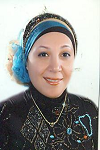
Biography:
Aliaa El Gendy graduated from Faculty of Medicine, Cairo University. She completed her MSc in Rheumatology and Rehabilitation from Cairo University in 2003 and PhD in Application of laser in internal medicine from Cairo University in 2013. Her domains of interest are application of laser in medicine, medical nutrition and apitherapy.
Abstract:
The objective of this study was to determine the therapeutic modality employing bee venom acupuncture (BVA) for controlling of chronic low back pain (CLBP). This study is a randomized, controlled clinical trial with two parallel arms. We intend to compare between the effects of BVA by bee sting in patients with CLBP and patients with chronic LBP on pharmacotherapy only. We recruited with a target sample size of 40 participants. The study was under taken for six months. Inclusion criteria age 28:65 history of back pain more than 3 months .The curative effect was measured by scoring of visual analog scale (VAS) of LBP at the time of screening and Oswestry low back pain disability questionnaire. The results revealed that the bee venom acupuncture showed significant improvement in patients who received bee venom group when compared to patients who received pharmacotherapy only. It is concluded that both modes of treatment for CLBP gave improvement regarding pain intensity, disability and quality of life being more evident in bee venom group supported with improved serum (IL1 and NF-KB)

Biography:
Maha M Saber is currently the Head of Complementary Medicine Department in the National Research Centre, Egypt. She is also the Professor of child health, consultant of Pediatrics and consultant of therapeutic nutrition. She received her MB Bch degree in 1985 from the Faculty of Medicine, Ain Shams University and her Master’s degree in Pediatrics in 1990. She received her PhD in Child health in 1995. Her research work has been focused lately on therapeutic nutrition, complementary medicine and bee products and their therapeutic effects. She organized and contributed to national and international research projects since 1998 and up till now; she has been the Principal Investigator and Member of multiple research projects within the National Research Center. She has published many scientific papers and articles in national and international journals. She is also the Head of the field of complementary medicine, Head of the field of management of regional obesity at the Center of Excellence, National Research Center, and the President of the Arabic Society of Therapeutic Nutrition and Complementary Medicine.
Abstract:
In most ancient cultures, honey has been used for both nutritional purposes and for medicine. The belief, that honey is a nutrient, drug and an ointment has been carried into our days. For a long time in human history it was the only known sweetener, until industrial sugar production began to replace it after 1800. In the long human history, honey has been not only as a nutrient but also as a medicine. A medicine branch, called apitherapy, has developed in recent years, offering treatments for many diseases by honey and the other bee products. Main sugars are the monosaccharide, fructose and glucose. Beyond the two monosaccharides, about 25 different oligosaccharides have been detected. Honey contains about 0.5% proteins, mainly enzymes and amino acids. The amount of vitamins and minerals is small and the contribution of honey to the recommended daily intake (RDI) of the different trace substances is marginal. Honey contains a number of other trace elements. From the nutritional point of view, the minerals chrome, manganese and selenium are of nutritional importance, especially for children of the age of 1 to 15 years. The elements sulphur, boron, cobalt, fluorine, iodine, molybdenum and silicon can be important in human nutrition too, although there are no RDI values proposed for these elements. Honey contains 0.3-25 mg/kg choline and 0.06 to 5 mg/kg acetylcholine. Choline is essential for cardiovascular and brain function and for cellular membrane composition and repair, while acetylcholine acts as a neurotransmitter.
Magdy I Al-Shourbagi
Sharm El Sheikh International Hospital, Egypt
Title: Anti-allergic effect of bee venom in allergic rhinitis

Biography:
Magdy I Al-Shourbagi is currently working as the Head of Hyperbaric Oxygen therapy Unit at Sharm El Sheikh International Hospital, Egypt. He is the Consultant of Ear, Nose and Throat, in the same hospital. He received his MB Bch degree in 1983 from Faculty of Medicine, Ain Shams University and his Master’s degree in ENT in 1989 from Diploma of Healthcare Quality, National Institute of training of Physician and Hyper Baric Oxygen therapy, Army Navy Academy, Alexandria. His interest has been focused lately on hyperbaric oxygen therapy and bee products and their therapeutic effects. He is also the Head of Quality Department in Sharm International Hospital.
Abstract:
Allergic rhinitis (AR) is characterized by nasal mucosal inflammation resulting from immunoglobulin E (IgE) mediated hypersensitivity reaction. Allergen exposures stimulate infiltration of inflammatory cells within the nasal mucosa, including basophils, eosinophils, mast cells and mononuclear cells. These inflammatory cells release several allergic mediators, such as histamine, cysteinyl leukotrienes and prostaglandins, which sustain the inflammatory reaction and produce characteristic nasal symptoms of sneezing, itching, rhinorrhea and nasal congestion. Bee venom (BV) consists of various biologically active amines, peptides and nonpeptide components and has radio protective, anti-mutagenic, anti-inflammatory, anti-nociceptive and anticancer activities. Two main components of BV, melittin and adolapin, have anti-inflammatory activity that involve inhibition of cycloxygease-2 and phospholipase-A expression and decrease levels of tumour necrosis factor-α interleukin (IL)-1, IL-6 and nitric oxide. The anti-allergic activity is associated with marked inhibition of OVA-induced tracheal contraction and histamine release from lung tissue. The mast-cell degranulating peptide binds to the mast cell receptors and inhibits the binding of IgE and production of histamine. BV also inhibits the release of inflammatory mediators similar to non-steroidal anti-inflammatory drugs.
Mona Mostafa Farid Ganem
National Research Center, Egypt
Title: Bee venom acupuncture in different neurological illness and its immune modulation
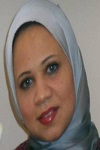
Biography:
Mona Mostafa graduated from Faculty of Medicine, Cairo University holding a degree of M B BCh in 2003, Master’s degree in Neuropsychiatry at Cairo University, 2009 and Doctorate degree in Neurology from the same university in 2015. Her research activities include \"Sleep apnea and cognitive dysfunction in myasthenia gravis\" and \"Vitamin D and its receptor gene polymorphism in ischemic vascular dementia\". Her recent projects are “Effect of low level laser on diabetic peripheral neuritis†and “Effect of low level laser on carpal tunnel syndromeâ€. Her domains of interest are cognitive functions – Apitherapy.
Abstract:
Venom therapy in particular that involves bee venom was practiced in ancient Egypt, Greece and China. Venom components have been widely used in oriental medicine to relieve pain and to treat inflammatory diseases, while other potential venom-related treatments for immune-related diseases, neurological diseases, infections and tumor therapies are currently under investigation. Several proteins, neurotransmitters and peptides comprise the main components of the venoms. Some peptides are exclusive related to bee, namely melittin, apamin and mast cell degranulating (MCD) peptide. Apamin is a peptide neurotoxin that selectively blocks the small conductance of Ca2+ dependent K+ channels (SK channels) expressed in the central nervous system (CNS). Increased activity of these channels may be related to decrease in plasticity and memory deficit that is seen with aging, so bee venom therapy may be helpful in protecting cognitive functions and learning deficit. Moreover it was observed that apamin protects dopamine neurons from degeneration, also it restores the function of silent neurons, so it may be hypothesized that apamin would be helpful in Parkinson’s disease (PD) and neurodegenerative disorders. Not only learning deficit, PD or neurodegenerative disorders would be responding to bee venom therapy but also it was claimed that chronic pain syndrome, multiple sclerosis, Bell’s palsy, post-herpetic neuralgia, guillain-barre syndrome, neuritis, sciatica, diabetic neuropathy and carpal tunnel syndrome also would be responded to bee venom therapy through different mechanisms of action of the other venom component. Therefore, research work focusing on studying the effect of different bee venom components in neurological disorder is inevitable in correlation with its immune modulation.
Biography:
Ehab Kamal is currently Lecturer of Tropical Medicine and Complementary Medicine in the National Research Centre. He got his Master’s degree from Ain Shams University 2009 and his MD degree from Azhar University 2014. He participated in the research on ozone therapy in the treatment of hepatitis C virus and in the dietary management of non-alcoholic steatohepatitis as fields of complementary medicine applications.
Abstract:
Apitherapy, or “bee therapy†(from the Latin apis which means bee) is the medicinal use of products made by honey bees. Products of the honey bee include bee venom, honey, pollen, royal jelly, propolis and beeswax. The exact origin of Apitherapy is difficult to pinpoint and can be traced back, in a general sense, to ancient Egypt, Greece and China. Use of honey and other bee products can be traced back thousands of years and healing properties are included in many religious texts including the Veda, Bible, and Quran. These are mostly attributed to nutritional benefits of consumption of bee-products and not use of bee venom. Honey bee venom contains at least 18 active substances. Melittin, the most prevalent substance, is one of the most potent anti-inflammatory agents. Adolapin is another strong anti-inflammatory substance and inhibits cyclo-oxygenase; it thus has analgesic activity as well. Apamin inhibits complement C3 activity and blocks calcium-dependent potassium channels, thus enhancing nerve transmission. Other substances, such as Compound X, hyaluronidase, phospholipase A2, histamine and Mast Cell Degranulating Protein (MSDP), are involved in the inflammatory response of venom. Thus the trial of Apitherapy in a range of immune mediated disorders such as IBD is a promising field to control such chronic gastrointestinal disorders that need long-term and medications with multiple side effects and as a trial to keep the patients in a remission state to control their life disabling symptoms and signs.
Walid M A Sadik
Animal Production Research Institute, Agricultural Research Center, Egypt
Title: Influence of some forage protein on goat immune response
Biography:
Walid M. A. Sadek is currently a Researcher of Animal Husbandry in Sheep and Goats Research Department, Animal Production Research Institute, Agricultural Research Center, Dokki, Giza. From 2001 till now. He has a master degree in 2004, and his PhD in 2011. He lectured at the Faculty of Agriculture, Mansoura University for the academic year 2008-2009. Participated in the accomplishment 18 scientific research and published 6 scientific papers. Member in the Egyptian Society of sheep and goats and Egyptian Society of Nutrition and Feeds.
Abstract:
Different sources of forage protein fed twenty lactating goats in 2nd and 3rd season were used in this study. Immune response, hematological pattern and milk production were determined. The feeding trails lasted for 14 weeks. The results revealed that was non-significant effect of the tested silages on most hematological and biochemical parameters. Results indicated also that improving of the average daily gain and milk yield g/h by G1, G2 and G3 respectively. The economic efficiency was better with G3 compared with the other groups. The cellular and biochemical changes in the blood especially the increased gamma globulins and the hepatoprotective effect.
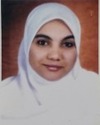
Biography:
Eitedal Mahmoud Daoud is currently a Professor of Child-Health in the National Research Centre, Cairo, Egypt. She received her Master’s degree in Pediatrics in 1989 at Cairo University and her PhD in Child-Health in 1996 from Ain Shams University and Diploma in Clinical Nutrition from National Institute of Nutrition in 2014. She organized and contributed to national research projects since 1997 and up till now. She has been the Principal or Co –PI or Member Investigator on research projects within the National Research Centre. She has published many scientific papers and articles in national and international journals. She is interested in studies related to clinical nutrition and bee.
Abstract:
The antioxidant activity of honey was not influenced after digestion. There is a significant correlation between the antioxidant activity, the phenolic content of honey and the inhibition of the in vitro lipoprotein oxidation of human serum. Honey intake caused a higher antioxidative effect in blood than the intake of black tea, although its in vitro effect measured as ORAC activity was five times smaller than that of black tea. Darker the honey, the higher is the phenolic content and its antioxidant power. Further, in a lipid peroxidation model system buckwheat honey showed a similar antioxidant activity as 1 mM α-tocopherol. Also, the influence of honey ingestion on the antioxidative capacity of plasma was also tested. In the first study, the trial persons were given maize syrup or buckwheat honeys with a different antioxidant capacity in a dose of 1.5 g/kg body weight. In comparison to the sugar control honey caused an increase of both the antioxidant and the reducing serum capacity. In the second study humans received a diet supplemented with a daily honey consumption of 1.2 g/kg body weight. Honey increased the body antioxidant agents: Blood vitamin C concentration by 47%, β-carotene by 3% and uric acid by 12% and glutathione reductase by 7%. It should be kept in mind that the antioxidant activity depends on the botanical origin of honey and has remarkable variations in honey from different sources. The antioxidant activity of honey is probably the reason of the protective effect of honey against damage and oxidative stress induced by CS in rat testis. Manuka honey protects middle-aged rats from oxidative damage. Ingested honey resulted in different antioxidant effects: the level of DNA damage was reduced, as well as the malondialdehyde level and the glutathione peroxidase activity in the liver of both the young and middle-aged groups. The glutathione peroxidase activity was increased in the erythrocytes and the catalase activity was reduced in the liver and erythrocytes of both young and middle-aged rats given supplementation.

Biography:
Amgad Hazzaa is currently Lecturer of alternative medicine in Arab Moroccan academy- Algeria- from 2010 till now, he got his Bachelors’ Degree in Physical Medicine, Cairo University, Diploma in Microbiology, Banha University, High Studies in alternative Medicine, Clinical Doctorate in Physiotherapy- Cairo University
Abstract:
Background
Bee venom (BV) has been used in the treatment of muscloskeletal and rheumatic problems in the clinical field, the use of honey and other bee products in human treatments traced back thousands of years and healing properties are included in religious texts. Apitherapy is the use of honey bee products for medical purposes, this include bee venom, raw honey, royal jelly, pollen, propolis, and beeswax. Whereas bee venom therapy is the use of live bee stings (or injectable venom solutions with different degrees of dilutions) to treat various diseases such as arthritis, rheumatoid arthritis, multiple sclerosis (MS), lupus, sciatica, low back pain, and tennis elbow. Objectives: To assess the clinical evidence for bee venom therapy (BVT) with or without physiotherapy modalities in cases with rheumatoid arthritis.
Setting:
Dar Elshefaa Medical center for Physiotherapy in Damas, Meet Ghammr, Dakahlia.
Time: 3 months From 3 Jan, 2015 to 5 April, 2015 Participants: Patients with Rheumatoid arthritis and suffer from back pain , a total of 38 patients had been enrolled in the previous study, and 8 of these were excluded from the current study, Thirty patients who had been treated, they were divided randomly into two groups, Group (A) with combined BVA and physiotherapy, group (B) treated by physiotherapy with injection of normal Saline Nacl and considered as a control group.
Intervention:
Physiotherapy program with or without using of bee venom therapy (BVT), Physiotherapy program involved (Infrared, Wax, ultrasound, Tens & Therapeutic exercises), BVT involved injecting purified & graduated diluted BV (1gm-500 ml normal serum saline concentration which was doubled every month at 3 months therapy).
Main Outcome Measures:
Four outcomes assessed at baseline for three months intervention to measure pain and patient satisfaction, lumbar range of motion was measured by Inclinometer and functional disability was measured by oswestry disability scale & Erythrocyte sedimentation rate (ESR), Measurements were taken at two intervals pre-treatment and post-treatment. Results: Bee venom therapy (BVT) was associated with clinically significant improvement at 3-month follow-up, the group A whom were treated by traditional therapy with bee venom therapy in the involved muscles showed significantly improvement of pain intensity, functional disability & Lumbar range of motion (P< 0.0001), Also a significant improvement for ESR.
Conclusion: There is a good scientific clinical evidence for bee venom therapy (BVT) more than control group treated by physical therapy only at 3-month therapy in pain, ROM , functional disability and ESR , also the BVT group showed significantly greater satisfaction compared with the control group.
Keywords:
honey bees, apitherapy, bee venom, bee sting, back pain, physiotherapy, and rheumatoid arthritis.
Eman H. Abdel-Rahman
National Research Center, Egypt
Title: Update of immunodiagnosis of cystic echinococcosis

Biography:
Eman Hussien Abdel-Rahman is currently working as Professor in National Research Center, Dokki, Cairo, Egypt since 2005. In 1990, she was appointed as Assistant Researcher at the National Research Center, Dokki, Cairo, Egypt. In 1995, she was appointed as Researcher at the National Research Center, Dokki, Cairo, Egypt. In 2000, she was appointed as Associate Professor at the National Research Center, Dokki, Cairo, Egypt. In 2005, she was appointed as Professor at the National Research Center, Dokki, Cairo, Egypt. Eman Hussien Abdel-Rahman received her B.Sc. in Zoology in 1981 at Cairo University, Egypt. She got M.Sc. in Immunoparasitology in 1990 from Cairo University, Egypt. Dr. Eman Hussien Abdel-Rahman obtained Ph.D. from Cairo University, Egypt in 1995 in Immunoparasitology. Eman Hussien Abdel-Rahman’s current research interests are Immunoparasitology, Biological Control, DNA Technology, Glycoprotein Antigens, Parasitology.
Abstract:
Cystic echinococcosis is a worldwide zoonotic disease caused by larval stages of Echinococcus granulosus. The persistence of cysts in the intermediate hosts as sheep, camels and humans is of interest since, once fully formed, cysts are apparently unaffected by the host’s immune response. Moreover, E.granulosus larval stages possess various molecules which modulate the host immune response and promote parasite survival and development as antigen B and antigen 5 of hydatid cyst fluid. The advent of proteomic analysis of the larval stages proteins has significantly improved the identification and characterization of proteins to use as potential new diagnostics as heat shock protein 20. During cystic echinococcosis, host immune responses switch from Immunoglobulin G1 and interferon gamma to IgG4, IgE, Interleukin 4, IL-5, IL- 6, IL-10 and tumor necrosis factor. Despite of this humoral and cellular immune responses evoked by the host, the parasite not only escape but impair the response and survive for a long time in the host. Among the immunologic tests for assessing the host-parasite relationship, assays of immunoglobulin isotypes detection with the use of distinct parasite antigens, circulating antigens detection and detection of Th1/Th2 cytokine expression. Enzyme Linked Immunosorbent Assay is the most commonly used in the immunodignosis of cystic echinococcosis. Accurate serological diagnosis of the cystic echinococcosis, as other helminthiasis, requires highly specific and sensitive antigens to be used in the assays. The choice of an appropriate source of antigenic material is a crucial point in the improvement of the diagnostic features of tests, and must be based on the developmental stage of the parasite. The current review emphasizes recent advances in the identification and characterization of novel antigens with potential for the immunodiagnosis of cystic echinococcosis. The need to search for new antigenic components with high diagnostic sensitivity and specificity remains a crucial task in the improvement of immunodiagnosis of the disease.
